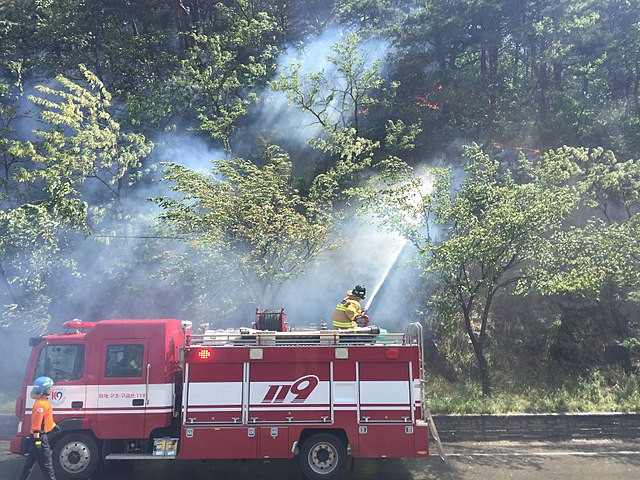Massive wildfires sweeping across southeastern South Korea have forced the evacuation of more than 2,600 inmates from local prisons and prompted widespread displacement of residents, as officials battle to contain at least nine major blazes fueled by dry winds and soaring temperatures.
Authorities raised the national wildfire alert to the highest level on Tuesday after flames burned through over 36,000 acres across regions including Andong, Uiseong, and Yeongdeok. Acting President Han Duck-soo, addressing a cabinet meeting, vowed an "all-out response," deploying helicopters and thousands of firefighters across the country. He also called for increased public vigilance amid continued dry weather.
In the hardest-hit areas, the Ministry of Justice confirmed that approximately 2,600 inmates were being relocated from four prisons in Cheongsong County as the flames approached. The Korea Forest Service said nearly 70% of the fires in the Andong and Uiseong region had been contained by Tuesday evening.
The blaze in Andong, a southeastern city of 150,000, triggered evacuation orders for multiple villages and neighborhoods near Andong University. Among the areas under threat is the historic Hahoe Folk Village, a UNESCO World Heritage site dating back to the 14th and 15th centuries. The fire was reported to be roughly 10 kilometers (six miles) from the site on Tuesday afternoon.
In Uiseong, a wildfire destroyed Gounsa, a Buddhist temple established in the 7th century. While the Korea Heritage Service said a stone Buddha statue and other national treasures were evacuated before flames reached the wooden structures, the loss of the temple dealt a cultural blow.
"Because this is such an old temple, it is so regrettable and heartbreaking that it has been burned down," said Jeung Meung-suk, a Buddhist follower at Unramsa, another ancient temple that suffered heavy fire damage.
More than 3,700 firefighters, 76 helicopters, and 530 emergency vehicles have been mobilized to contain the blazes. The national government has designated the affected southeastern counties as special disaster zones, unlocking emergency funds and streamlining recovery efforts.
South Korea's Interior Ministry reported that at least four people have died since Saturday, including four emergency responders trapped in Sancheong. Eleven others have been injured nationwide. Hundreds have fled their homes.
In coastal Yeongdeok, road closures and evacuation orders were issued for at least four villages. Meanwhile, in Sancheong and Ulsan-where fires had been mostly extinguished earlier in the week-dry winds reignited concerns of further outbreaks.
Officials suspect human activity may have triggered some fires. Investigations are underway into reports that sparks from welding and burning of overgrown vegetation during family tomb maintenance may have contributed to the flare-ups.






